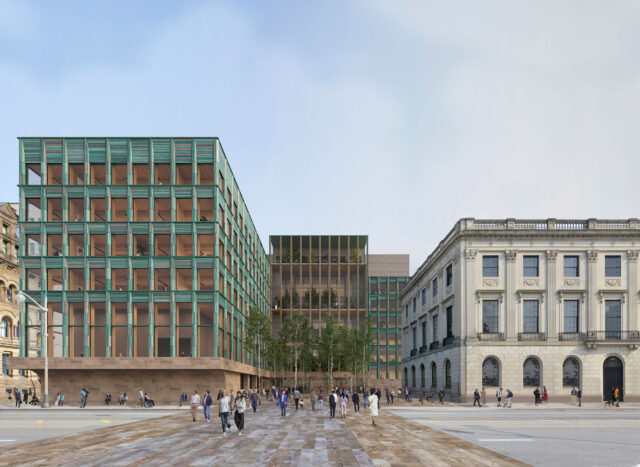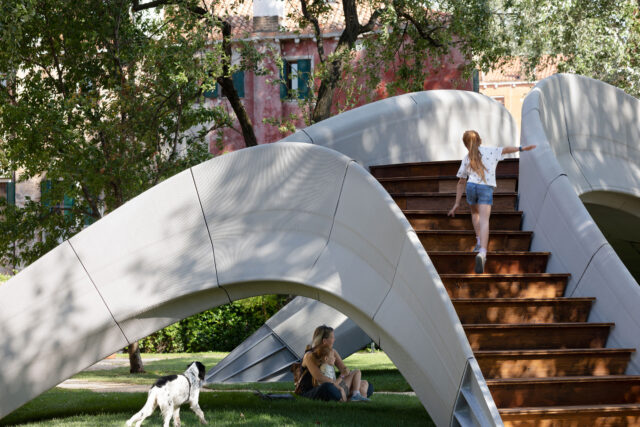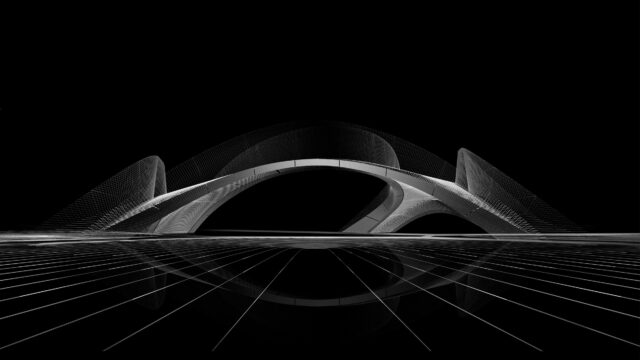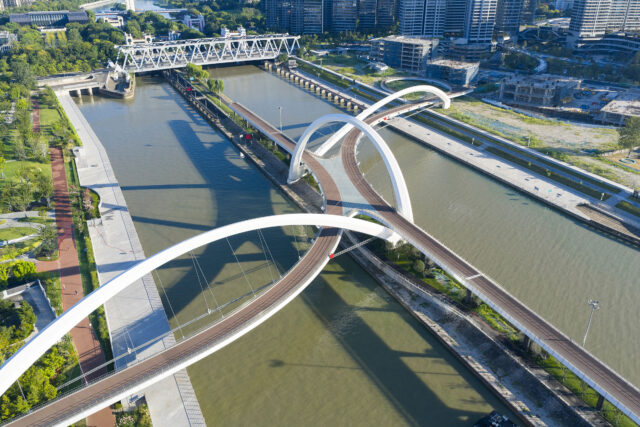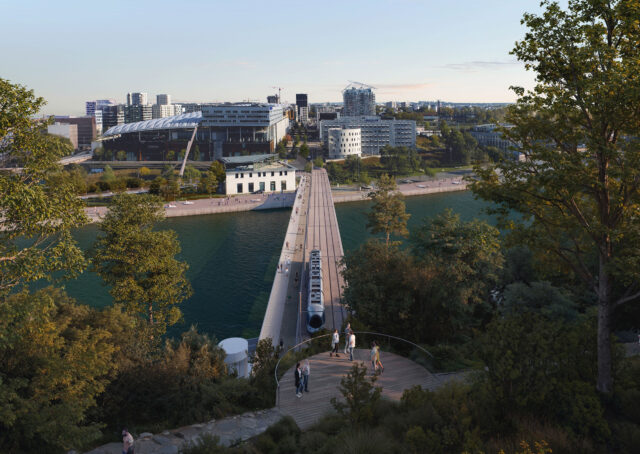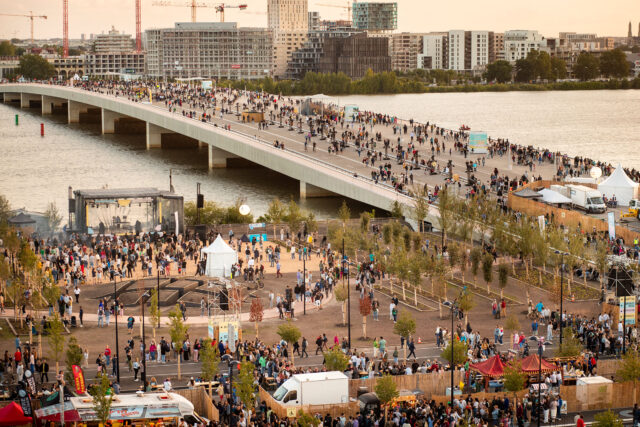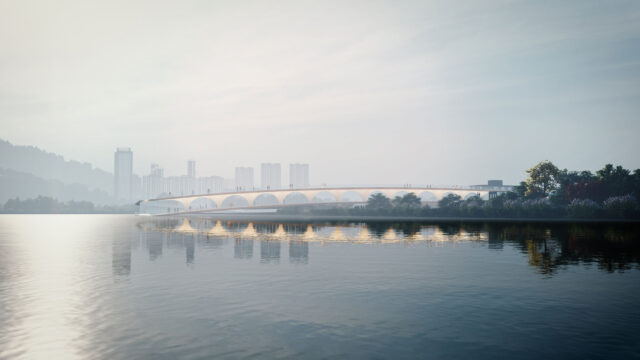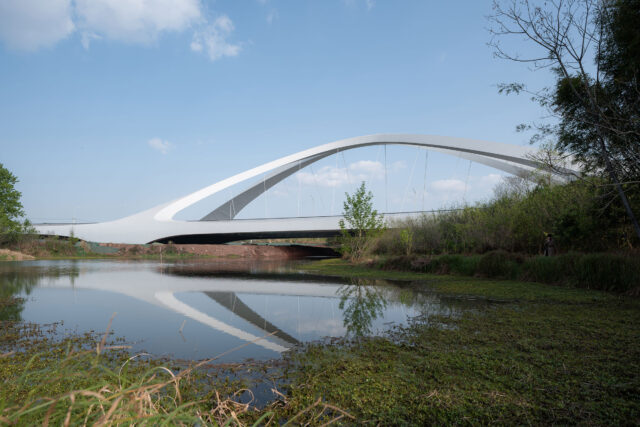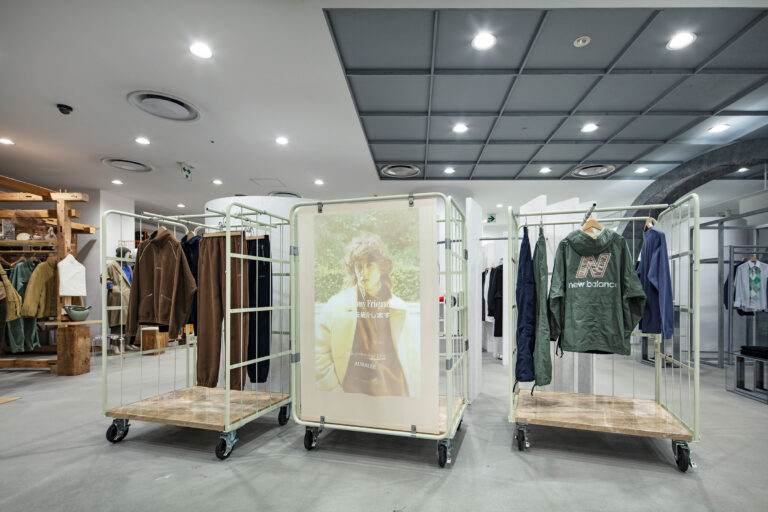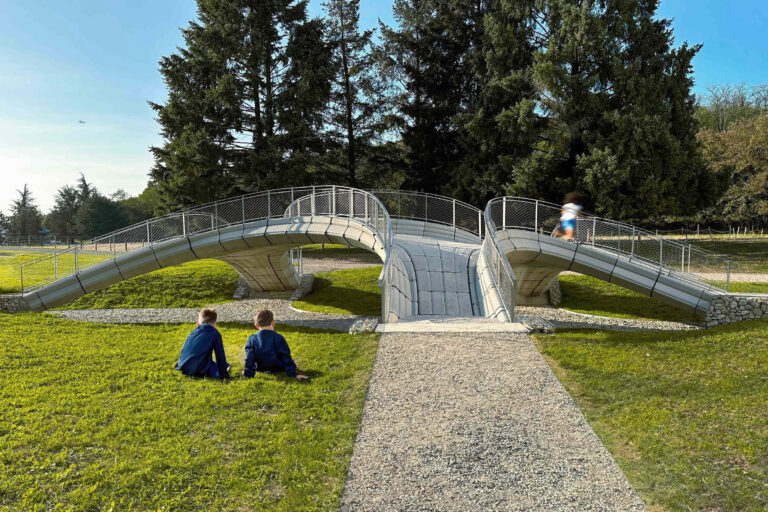
SHARE ザハ・ハディド事務所を含むチームによる、橋「フェニックス」。コンクリートの3Dプリント技術を用いた実験的な橋。同チームが開発した“Striatus”の進化系として、カーボンフットプリント等を大きく削減。様々なプロジェクトに繋がる“マイルストーン”として完成



ザハ・ハディド・アーキテクツを含むチームによる、橋「フェニックス」です。
コンクリートの3Dプリント技術を用いた実験的な橋です。建築家は、同チームが開発した“Striatus”の進化系として、カーボンフットプリント等を大きく削減しました。また、様々なプロジェクトに繋がる“マイルストーン”として完成させました。
プロジェクトに関するチームは、ホルシム、スイス連邦工科大学チューリッヒ校、ザハ・ハディド・アーキテクツ・コンピュテーション・アンド・デザイン・グループ、インクリメンタル3Dで構成されています。
こちらはリリーステキストの翻訳です
フェニックス:新しい3Dプリントコンクリートの橋
新しいフェニックス・ブリッジは、2021年のヴェネチア・ビエンナーレ国際建築展で発表された世界初の3Dプリント・コンクリートの橋「Striatus」の進化形として発表されました
Striatusブリッジのイノベーションを基に、フェニックスはStriatusのオリジナルのブロックからリサイクルされた骨材を含む10トンのリサイクル材料で建設されました。ECOCycle®サーキュラー・テクノロジーを駆使して、ホルシムはフェニックス用に独自のコンクリート・インクを開発した。このコンクリート・インクは、2021年のStriatusブリッジと比較してCO2排出量を40%削減し、全体的なカーボンフットプリントも25%削減した、最適化された低炭素配合となっています。
コンピュテーショナル・デザインと3Dプリンティングを駆使した循環型構造により、性能に妥協することなく、使用材料を最大50%削減することができます。循環するよう設計されたフェニックスは、補強材を使わず圧縮のみで自立し、ブロックは簡単に分解してリサイクルできます。
リヨンにあるホルシムのイノベーション・ハブで建設されたフェニックスは、ホルシム、スイス連邦工科大学チューリッヒ校のブロック研究グループ、ザハ・ハディド・アーキテクツ・コンピュテーション・アンド・デザイン・グループ(ZHA CODE)、インクリメンタル3Dの共同プロジェクトです。3Dコンクリートプリントと組み合わせた循環型構造が大幅な炭素削減を実現することを示すフェニックスブリッジは、あらゆる規模の低炭素構造ソリューションの開発に取り組むホルシムとそのパートナーによる最新のマイルストーンです。
ホルシム社グローバルR&D部門責任者のエデリオ・ベルメホは述べています。
「私は、フェニックスをお披露目できることを嬉しく思います。これは、共通の目標を達成するためのパートナーとの実りあるコラボレーションの成果です。その目標とは、今日、必要不可欠なインフラは、循環型で低炭素な方法でデザインし、建設することが可能であることを実証するということです。このプロジェクトは、ネット・ゼロの未来のために建築物の脱炭素化を目指すホルシムのミッションにおいて、イノベーションがもたらしうるインパクトを紹介しています」
チューリッヒ工科大学ブロック研究グループ共同ディレクターのフィリップ・ブロックは述べています。
「コンクリートは人工の石であり、石のようにまっすぐな梁になることを望まず、石積みのアーチになることを望みます。このような歴史的原則に従うことで、私たちはリサイクルしやすいように材料を分別し、解体や再利用しやすいように構造を乾式で組み立てることができます。3Dコンクリートプリントは、私たちが必要とする場所だけに正確に材料を使用することを可能にします。その結果、コンクリート建設に対する持続可能で真に循環的なアプローチが実現したのです」
ザハ・ハディド・アーキテクツ、コンピュテーション&デザイン・グループ責任者、シャジェイ・ブーシャンは述べています。
「フェニックスは、技術的な準備における重要なマイルストーンです。Striatusで始まった設計から施工までの統合技術の成熟を示すものです。デジタルデザインツールの堅牢性の向上、数々の構造設計や 循環性関連の改良との緊密な連携、ロボットによるコンクリートプリントのパラメーターとの緊密な統合、より少ないプリント時間でほぼ2倍のブロック数を生産する効率向上のための広範な調整が行われました」
インクリメンタル3D共同設立者、ヨハネス・メーゲンスは述べています。
「その設計理念により、Striatusはすでに3Dコンクリート・プリンティングを可能な限り純粋な形で表現していました。現在、2年の歳月を経て2度目の改良が施されたフェニックスは、二酸化炭素排出量を大幅に削減し、建築基準法に準拠した恒久性を備え、その他にも多くの改良が加えられています。その結果、我々インクリメンタル3Dチームはフェニックスに非常に興奮しており、同様の精神で進化する他の多くのプロジェクトを楽しみにしています」
以下の写真はクリックで拡大します






以下、建築家によるテキストです。
Phoenix: the new 3D-printed concrete bridge
Holcim Innovation Hub in Lyon, France
The new Phoenix bridge represents the evolution of the Striatus, the first-of-its-kind 3D-printed concrete bridge presented during the 2021 Venice Architecture Biennale.
Building on the innovations of the Striatus bridge, Phoenix is constructed from 10 tons of recycled materials, including recycled aggregates from the original blocks of Striatus. Using its ECOCycle® circular technology, Holcim developed a proprietary concrete ink for Phoenix that incorporates an optimized low-carbon formulation with a 40% lower CO2 footprint compared to the 2021 Striatus bridge and an overall carbon footprint that is 25% lower than the original structure.
Circular construction, using computational design and 3D printing, allows for a reduction of up to 50% of the materials used with no compromise in performance. Circular by design, Phoenix stands solely through compression without reinforcement, with blocks that can be easily disassembled and recycled.
Constructed at Holcim’s Innovation Hub, in Lyon, Pheonix is a collaboration between Holcim, Block Research Group at ETH Zurich, Zaha Hadid Architects Computation and Design Group (ZHA CODE) and incremental3D. Demonstrating circular construction combined with 3D concrete printing offers significant carbon reductions, the Pheonix bridge is the latest milestone by Holcim and its partners in their work to develop low-carbon structural solutions at every scale.
Edelio Bermejo, Head of Global R&D, Holcim: “I am thrilled to unveil Phoenix, the result of a fruitful collaboration with our partners to meet a common goal: demonstrating that essential infrastructure can be designed and built in a way that is circular and low-carbon today. This project showcases the impact that innovation can have in Holcim’s mission to decarbonize building for a net-zero future.”
Philippe Block, Co-Director, Block Research Group at ETH Zurich: “Concrete is an artificial stone, and like stone, it does not want to be a straight beam, it wants to be a masonry arch. Following these historical principles allows us to keep materials separated for easy recycling and to dry-assemble the structure for easy deconstruction and reuse. 3D concrete printing allows us to use material only and exactly where needed. The result is a sustainable and truly circular approach to concrete construction.”
Shajay Bhooshan, Head of Computation and Design Group, Zaha Hadid Architects: “Phoenix is a significant milestone in technology readiness. It showcases the maturation of integrated design to construction technologies that were initiated with Striatus. There have been improvements in the robustness of the digital design tools, closer alignment with the numerous structural design and circularity-related improvements, tighter integration with robotic concrete printing parameters and extensive calibration to improve efficiency of production of almost double the number of blocks in less printing time.”
Johannes Megens, Co-Founder, incremental3D: “Thanks to its design principles, Striatus already represented 3D concrete printing in its purest possible form. Now, after two years and in its second iteration, Phoenix adds a largely reduced carbon footprint and permanence according to building codes along with many other further improvements. Consequently we, the incremental3d team, are very excited about Phoenix and we are looking forward to many other projects that will evolve in similar spirit.”
■建築概要
Striatus Development Team (2021)
───
Design
ZHA CODE: Jianfei Chu, Vishu Bhooshan, Henry David Louth, Shajay Bhooshan, Patrik Schumacher
ETH BRG: Tom Van Mele, Alessandro Dell’Endice, Philippe Block
───
Structural Engineering
ETH BRG: Tom Van Mele, Alessandro Dell’Endice, Sam Bouten, Philippe Block
───
Fabrication design
ETH BRG: Shajay Bhooshan, Alessandro Dell’Endice, Sam Bouten, Chaoyu Du, Tom Van Mele
ZHACODE: Vishu Bhooshan, Philip Singer, Tommaso Casucci
───
3D concrete printing
In3D: Johannes Megens, Georg Grasser, Sandro Sanin, Nikolas Janitsch, Janos Mohacsi
───
Concrete material development
Holcim: Christian Blachier, Marjorie Chantin-Coquard, Helene Lombois-Burger, Francis Steiner
LafargeHolcim Spain: Benito Carrion, Jose Manuel Arnau
───
Assembly & Construction
Burgin Creations: Theo Bürgin, Semir Machler, Calvin Graf
ETH BRG: Alessandro Dell’Endice, Tom Van Mele

